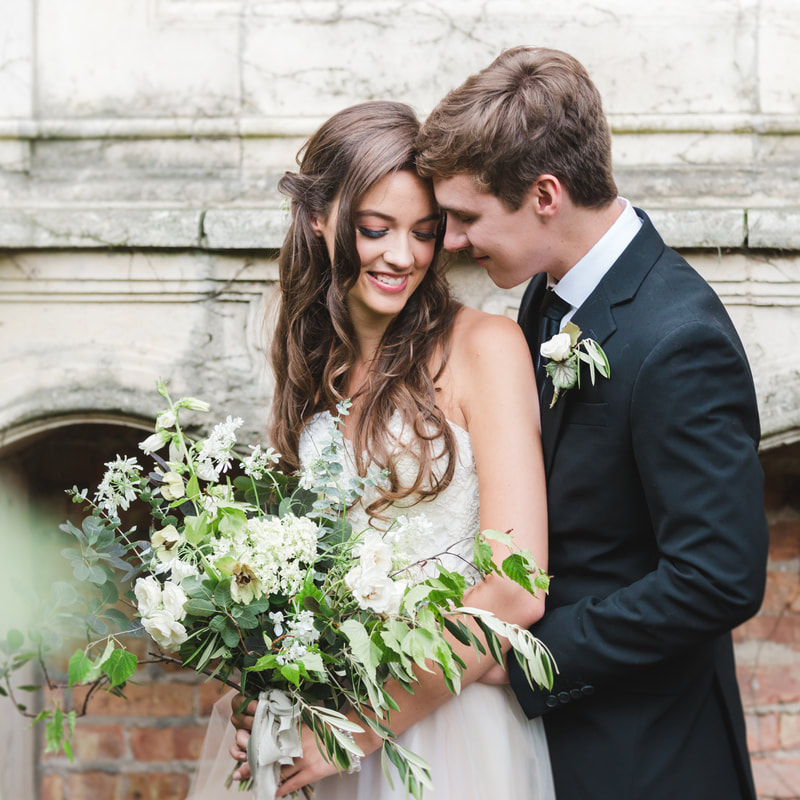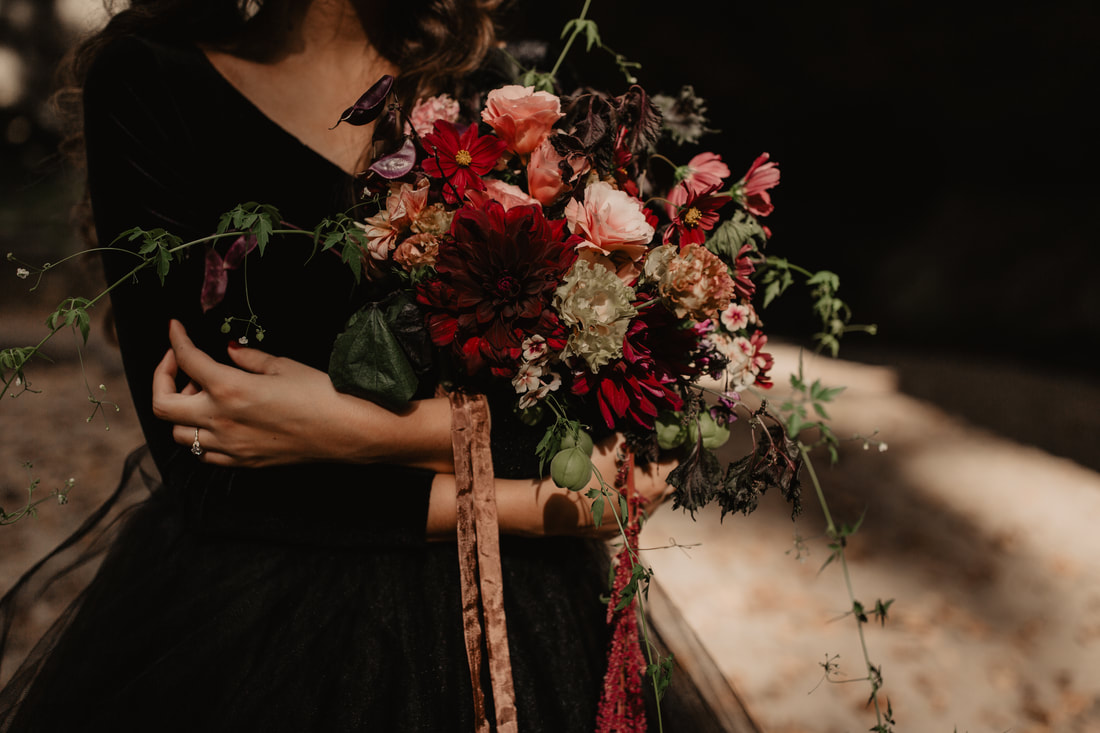|
We were lucky enough to be neighbors with the lovely and witty Mary Simmons of Persephone Floral at this past winter's Indie Wed, and we instantly fell in love with her style. It's clear upon first glance that Mary goes far beyond sticking flowers in a vase, and utilizes her background in visual arts to build creative and singular arrangements for each event. She is easygoing and flexible - happy to travel, or create a package that suits your aesthetic and budget. Read on to learn about the latest industry trends, and why you definitely want your florist to be an artist at heart. 1) Can you tell us a little bit about your background as a painter, and how this led you to the world of floral design? Would you say knack for composition began with the paintbrush? My journey from painting to flower arranging involved both practical considerations and transferred passion. Oil painting was second nature to me. I can't describe the feeling of putting paint onto canvas. I used to paint for hours and it would feel like no time had passed. I knew that I wanted to be a painter, so of course I studied it in college. But I never knew what I wanted to paint! It felt important for the painting to be meaningful but really I was most interested in how color, line, texture, and value could come together in truly striking ways. I struggled to find a purpose and subject matter for my work. After I graduated, I moved to Chicago and tried to pursue art. I worked and kept up a studio practice on the side. Eventually friends started getting married. Being wildly confident in my ability to successfully pick up creative pursuits, I began volunteering to be their florist. The experience of arranging flowers into beautiful designs reminded me of what painting felt like. Except better, because I knew what made flower arranging meaningful---it transformed a room into an intimate space. Suddenly I saw that flower arranging was an obvious path I just hadn't been seeing. I loved nature and gardened as a child so I already had knowledge of flowers. I could use all of the skills I had learned as a painter to compose breathtaking arrangements, be creatively fulfilled, and have the thing I felt I lacked with painting: purpose. I didn't go for it right away though. I was nervous about owning my own business and I wasn't ready to trade in my paint brushes for pruning shears yet. The final push happened after I had my daughter Sibyl. I soon realized that all that free time I thought I would have to paint while on maternity leave didn't exist. I couldn't paint around her because of the oil fumes. So I started arranging flowers for fun because it was something I could do with her. Then one day it occurred to me that the only thing holding me back was fear. That wasn't the example I wanted to set for my daughter. I quit my job, filed for a business license and haven't looked back. 3) We understand that you often do floral design for destination weddings and events. As a florist who is committed to sourcing local products, this must really change the materials you're working with! What are some of the places you've traveled for a booking, and is there a destination on your bucket list that you've always wanted to try out? Travel is a huge passion of mine, getting to experience a new environment through the lens of a florist enriches the experience so much. My favorite part is getting to meet the farmers and learn about what is local and seasonal to their region. I get to experience flowers that I wouldn't usually get to work with or experience a familiar flower in a new context. It's definitely a challenge to manage all the logistics and familiarize myself with a new place, but the more I do it, the more my network of farmer friends grows. Two years ago I arranged flowers in England; last year I went to Brooklyn, Dallas, and Atlanta. The wedding in Atlanta was in February. When I called up the local farmers they said they had nothing for me because it was winter, but their winter and a Chicago winter are two different things. I found flowers beginning to bloom there that Chicagoans wouldn't see for months. I'm hoping for an excuse to travel to Iceland, Japan, or Mexico. Anyone want to take me? 2) As someone who has a finger on the pulse of floral design, what are some of the trends you've noticed lately? What's in and what's when it comes to designing a modern floral package? And is there a look or element that you'd say will always be timeless and en vogue? The floral world is a funny place when it comes to trends, because its very slow to move forward. You have florists still designing the way they did in the 70's, 80's and 90's which is very formal. Others have embraced a more natural style, which reminds me of old Dutch still lifes; this came into vogue in the 2010s. Now I'm seeing a shift toward simple, yet dramatic, Ikebana style arrangements. Personally, I've developed a style that is grounded in a deep appreciation for flowers in their natural state. I want to preserve their original beauty. What is more timeless than nature itself? I'm definitely influenced by other florists, but I have tried to develop my own distinct style. I want my customers to come to me because they love my style in particular. That is probably the biggest trend overall: florists are beginning to see themselves as artists and feeling more free to experiment and develop unique arrangements. At the same time, the florist who follows the standard formula remains a part of the industry. I think that speaks to the fact that people buying flowers all have their own preferences. As a florist who mainly does weddings, most of my clients have never worked with a florist before. There is a lot of client education involved. I love working with people who want beauty at their event, but need my expertise to guide their designs. At the same time, a lot of couples just want what they saw on Pinterest or at their friend's wedding. There's nothing wrong with that, but it is why trends stick around forever in this industry.
1 Comment
|









